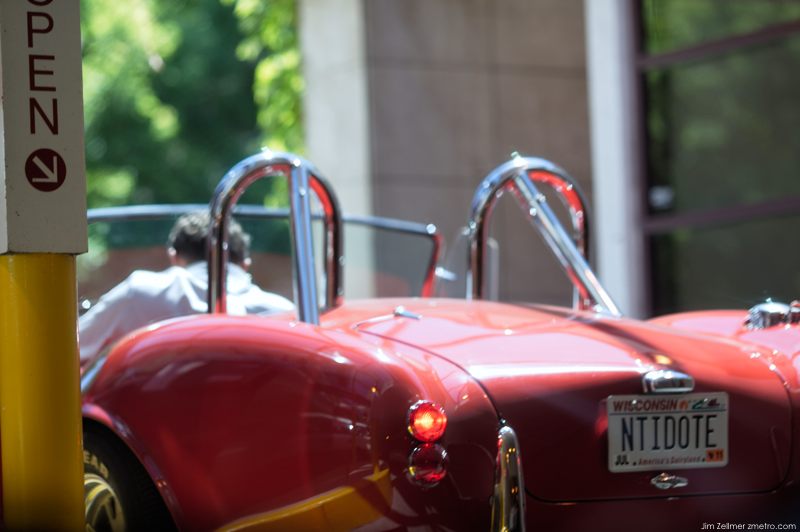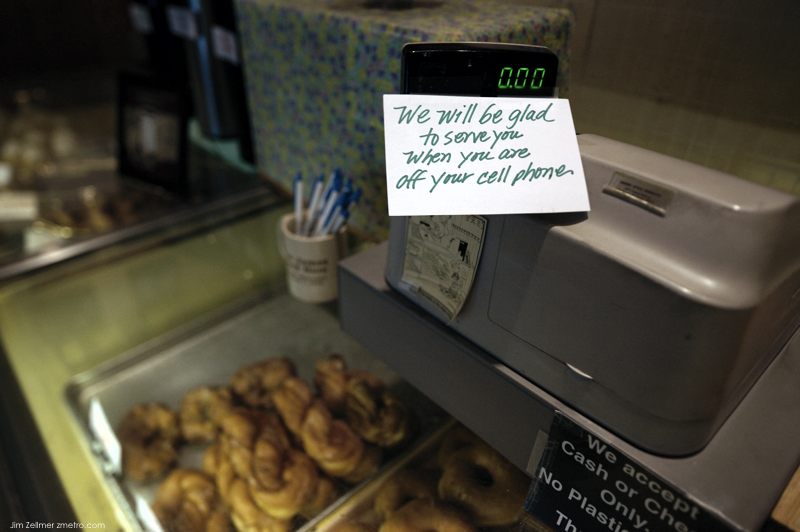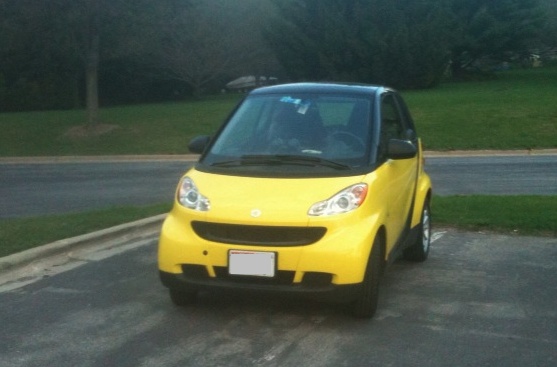In order to be for a democracy, or in our case, a functioning Federal Republic, one has to have an informed electorate. Of course, that is infinitely more difficult than one might think. For even when the raw truth of a story comes to light from unimpeachable sources, it is frightening how the vested interests today will immediately attack the information and the source involved – in order to lessen the impact of the truth on the public at large – with frightening speed.
As mentioned in this column, I seem to spend an inordinate amount of time refuting e-mails in which there is no truth to the claim being made, whether it’s about the Auto Task Force, why the financial system melted down or any other major hot-button issue. On the other hand, I get such e-mailings far more often than I do links to a legitimate news story. Moreover, all too often the e-mail’s forwarder, who believes completely in the e-mail no matter how outrageous the claims made in it, often point out to me that they no longer read newspapers because of “known” bias.
That is scary. People will trust an unknown and angry blogger – whose bias screams through his or her words, and who knowingly and intentionally misleads the reader – before they’ll trust verifiable facts in the media.
Category: Cars
The GM $50,000,000,000 Taxpayer Bailout and The $41,000 Volt
By taking a loss on the first several years of Prius production, Toyota was able to hold its price steady, and then sell the gas-sippers in huge numbers when oil prices soared. Today a Prius costs roughly the same in inflation-adjusted dollars as those 1997 models did, and it has become the best-selling Toyota in the United States after the evergreen Camry and Corolla.
Instead of following Toyota’s model, G.M. decided to make the Volt more affordable by offering a $350-a-month lease over 36 months. But that offer allows only 12,000 miles per year, or about 33 miles per day. Assuming you charged your Volt every evening, giving you 40 miles of battery power, and wanted to keep below the mileage limit, you would rarely use its expensive range-extending gas engine. No wonder the Volt’s main competition, the Nissan Leaf, forgoes the additional combustion engine — and ends up costing $8,000 less as a result.
In the industry, some suspect that G.M. and the Obama administration decided against selling the Volt at a loss because they want the company to appear profitable before its long-awaited initial stock offering, which is likely to take place next month. For taxpayers, that approach might have made sense if the government planned on selling its entire 61 percent stake in G.M. But the administration has said it will sell only enough equity in the public offering to relinquish its controlling stake in G.M. Thus the government will remain exposed to the company’s (and the Volt’s) long-term fate.
A Few Photos

I believe this is a rather rare Shelby Cobra.
A sign of the times: “We will be glad to serve you when you are off your cell phone”.
KRLX
A squirrel seeking dinner
Malt O-Meal
Cooling off…
Dinner at Sea Salt Minneapolis
Art Fair on the Square Madison
The Energy Future
The winter of 1979 in southern California reminded people why they had migrated to LA over the decades. The daytime temperatures were in the mid-70s, and the LA basin’s summer smog had disappeared, revealing the snowcapped San Gabriel Mountains.
At Neonex Leisure that day, we were brainstorming the recreational vehicle of the future. At the time we built America’s largest RV, the Arctic Sun, a combination van/pickup truck pulling a 55-foot-long 5th-wheel trailer. Now Neonex Canada had put our California division in charge of designing the company’s next Class A Motorhome.
Each of the other five U.S. managers gave their impressions of the future of the recreational vehicle, disclosing visions of startling grandeur. I was more flippant: “I bet it’s a Honda with a Coleman tent.” Three months later the Second Energy Crisis hit. We shut down our RV plant in two days flat, and I was back in Texas in five.
My point is that, if you had asked every energy or automotive issues guru what the future would hold for automobiles just before the winter of 1978 – 79, the answer would have been completely different if you’d asked them the same thing just 12 months later. That’s what an energy crisis can do.
My joke about a Honda with a Coleman tent was weirdly prophetic. But my fellow managers’ visions of million-dollar motorhomes would also turn out to be spot on — 20 years later.
Lunch with Luca Cordero di Montezemolo
Screaming down the home straight of Ferrari’s test track at 200kmph an hour in a classic red 458 Italia, I suddenly don’t feel like lunch. The Fiorano track near Bologna in central Italy is, at 3km, not long. But, partly in an attempt to impress the test driver next to me with some fast cornering, I feel as if I have left part of my stomach on one of its hairpin bends. Matters fail to improve as, in heavy fog untypical of early summer, I take the car off the track and, rather more slowly, on to the winding roads of the Apennines, heading for Ferrari HQ in nearby Maranello.
I am still spinning slightly when we pull into the car park just before the company’s elegant and aristocratic chairman, Luca Cordero di Montezemolo, who somewhat incongruously arrives in a small Fiat. He explains that his journey from Rome has been a nightmare as fog diverted his helicopter and forced him to take trains and cars – hence the Fiat. Nevertheless he appears in characteristically enthusiastic mood. “I’ve just been to a conference at the Vatican [on the financial crisis]. Fantastic,” he explains. “Fantastic” is a word Montezemolo uses a lot. Ferrari is “fantastic”, Italian food is “fantastic”, his new high-speed train company, NTV, is “fantastic”, as is the 458 Italia I have been driving.
On my way out he hands me a white postcard. “This is what I give to all new employees at Ferrari,” he says. Looking at it in a Ferrari 599 on the way back to Milan, it looks to me like the perfect credo for Montezemolo. It starts: “The real secret of success is enthusiasm. You can do anything if you have enthusiasm … With it there is accomplishment. Without it there are only alibis.”
Clusty Search: Luca Cordero di Montezemolo
Incapable of Rational Thought
It started with an email sent to the Chevrolet employees at their Detroit headquarters and warned them not to use the word Chevy in lieu of the far more formal Chevrolet. GM PR people added that there was a plastic jar put into the hallway there so that each time someone heard another use the now “forbidden” word, they would deposit money as a personal penance. This decision, they said, was simply protecting the brand image of Chevrolet, much the way Coke or Apple protected its image. The memo was signed by the President of Chevrolet and GM’s Vice President for Marketing.
Apparently at Ed Whitacre’s new GM, morons have retaken the institution.
Are they not aware that “Chevy” has been an affectionate nickname for Chevrolet for at least 80 years and is not likely to go away? Did these executives not know that “Coke” is to “Coca-Cola” what “Chevy” is to “Chevrolet”?
People don’t call their computers “Apple” — “Mac” being to “Macintosh” what “Chevy” is to “Chevrolet” — and certainly nobody calls anything “my Apple iPod.”
America’s Car-Mart: Bentonville’s Secret Sauce Makers
The Financial Investigator: Most every day at 802 Southeast Plaza Avenue in Bentonville, Arkansas appears to be a pretty good one.
That’s because that address houses the headquarters of Americas Car-Mart, an auto retailer that has found the sweet spot, the intersection where a corporation’s business model meets consumer demand and the net income flows like cool, clear water.
Focusing exclusively on the sub-prime auto-buyer, their clean and efficiently-organized used-car lots throughout the south-central and southwest regions offer a stark contrast to the traditionally dodgy experience of buying a used-car; no one at any Americas Car-Mart locale is likely to be mistaken for the Kurt Russell character in Used Cars. The staff is friendly and well-turned out, there is a wide variety of cars, trucks and vans to choose from, the business offices are clean and air-conditioned and, perhaps best of all, the word “no” just doesn’t appear to be used all that often.
From an analytical standpoint, the business model appears to be simplicity itself.
Vintage VW Bus Signage
The Two Stall Park Trick

Often seen with Porsche, Mercedes, Audi or BMW drivers. The first “Smart Car” driver I’ve seen using this technique. Perhaps dark humor?
The Truth About the TATA Nano
hy is a soon-to-be success story gathering dust at TATA dealers across India? Much like the initial growing pains of the Ford Model T, the $2000 Nano currently lies on waiting list. Given the lopsided supply/demand and construction conflagrations with the government, I reckon enterprising Indians are flipping the Nanos living in parking lot limbo for profit. Still, my precious few moments sitting in somebody’s dusty Nano left me impressed. Not because it was a perfect machine: I saw automotive history in the making.
Rarely in America is a car designed around a vision: witness the overweight performance icons clawing for yesteryear’s glory, car based trucks and globally designed, badge engineered atrocities. Not with the TATA Nano: behold the homegrown hero.
The Nano is born from an undying need for affordable transportation in a country with a growing but repressed middle class. This group needs a family vehicle superior to tube frame rickshaws and 150cc motorcycles carrying four or more people. Yes, really: I saw a family of four riding a motorcycle through the congested, fast paced, life threatening streets of Bangalore. Make no mistake: a car at this price and size is the automotive embodiment of “If you Build It, They Will Come.”
It’s all about the lakhs; the Nano is designed around a price befitting the Indian working class. One look around the beast shows the good, bad and ugly of the situation.
Exterior fit and finish is respectable, until you spot the unfinished rear hatchback seams, hurriedly painted over. That stylish rear hatch is glued shut, so cargo is only accessible from the rear seat. And the list of price-conscious ideas doesn’t stop: three-lug wheels, single arm wiper blade and an adorable looking center exit exhaust.

